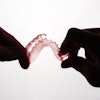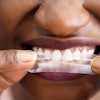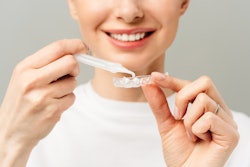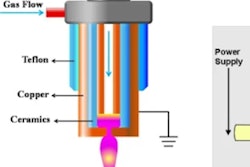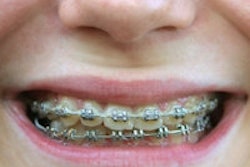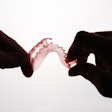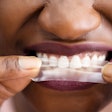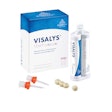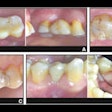At-home and in-office tooth bleaching (IB) may effectively preserve the appearance of resin-infiltrated (RI) white spot lesions (WSLs), according to a study published in the Journal of the American Dental Association.
However, the limited color stability when exposed to staining highlights the need for extra measures to ensure long-term results, the authors wrote.
“Both IB and HB (home bleaching) restored the color of resin-infiltrated WSLs to near-baseline levels after staining in vitro, with no significant differences between the 2 methods,” wrote the authors, led by Dr. Christoph Matthias Schoppmeier of the University of Cologne in Germany (JADA, July 2025, Vol. 156:7, pp. 517-529).
In the study, researchers used 60 extracted, caries-free third molars that were cleaned and embedded in acrylic. The crowns were polished, rinsed, and randomly divided into four groups: control, DRI (demineralization plus RI), IB (DRI plus IB), and HB (DRI plus HB). Except for the control group, all teeth were exposed to a cariogenic environment to induce WSLs through a 21-day cycle of demineralization and remineralization, they wrote.
After confirming WSLs, the lesions were treated using RI and light curing. Then teeth underwent initial color measurement, bleaching treatments, and storage in distilled water for 14 days. All samples were aged using thermocycling, exposed to a coffee-staining solution for 12 days to simulate one year of coffee intake, and received a second round of bleaching.
After bleaching, the HB group showed a mean total color difference (ΔE) of 11.7 compared to 9.8 for the IB group, with no significant difference (ΔE = -1.857; p = 0.127). No significant differences in staining were observed between the groups after 12 days (ΔE = -1.5; p = 0.867) or after rebleaching (ΔE = -2.393; p = 0.111), they wrote.
After two weeks, only the control group differed significantly from the HB group (ΔE = -3.511; p = 0.005). However, none of the groups reached an ΔE value below 3.7. Overall, WSL formation led to similar bleaching outcomes and masking effects across all treated groups.
However, the study had limitations. The results obtained from an in vitro model may not fully reflect the complex biological and environmental factors found in the mouth, the authors noted.
“The comparable whitening achieved by both bleaching methods (IB, HB) in vitro suggests that clinicians may flexibly choose between these techniques on the basis of patient preferences and material availability,” they wrote.


